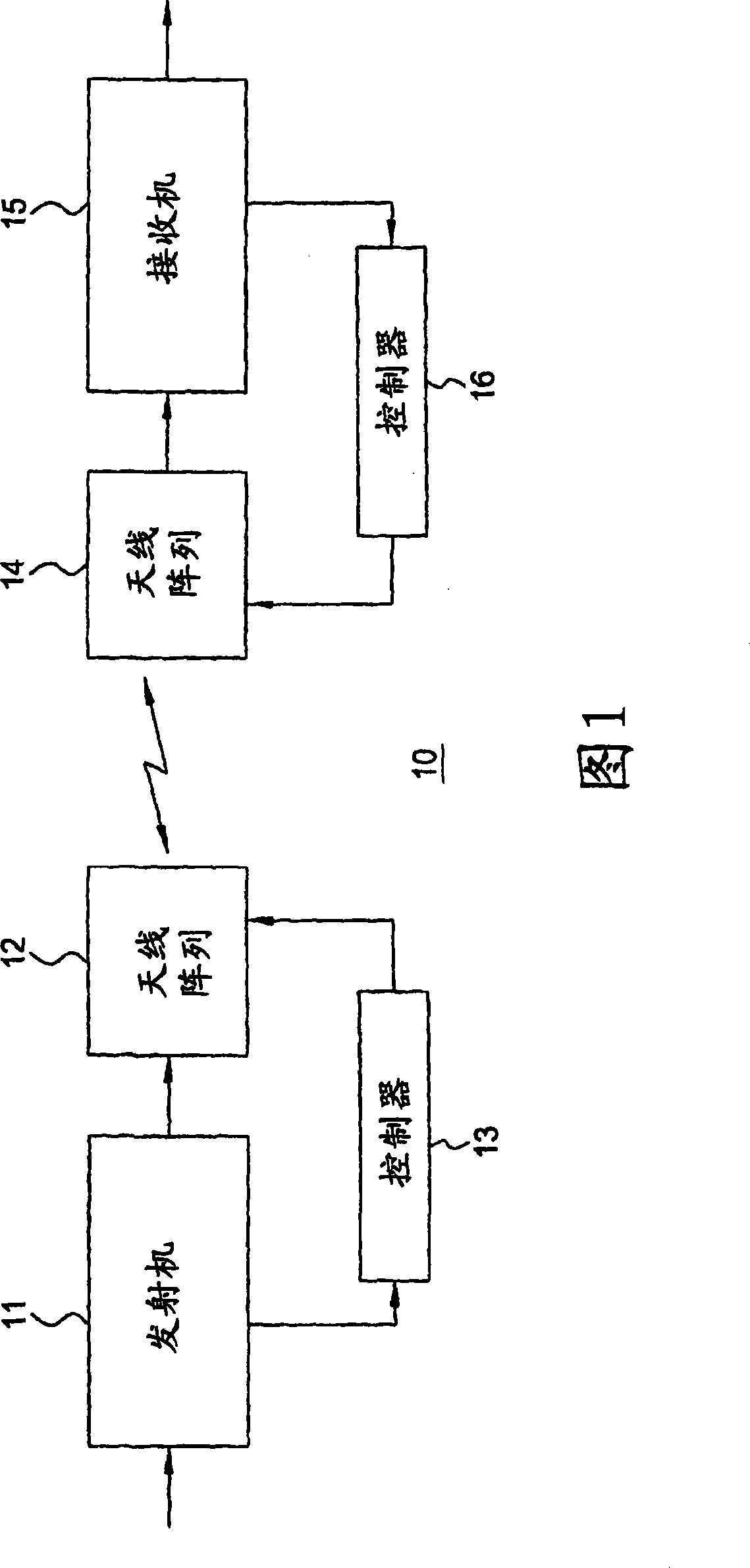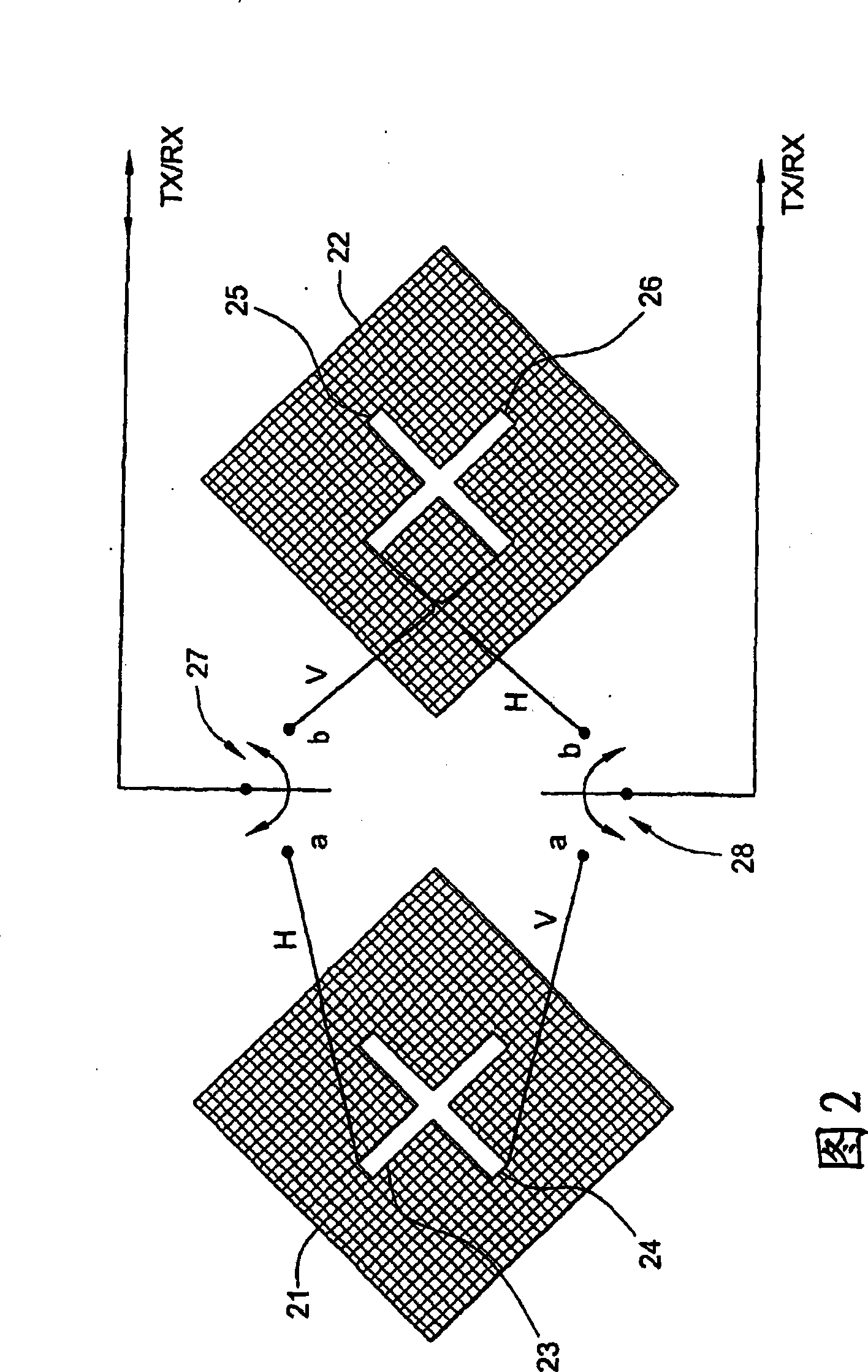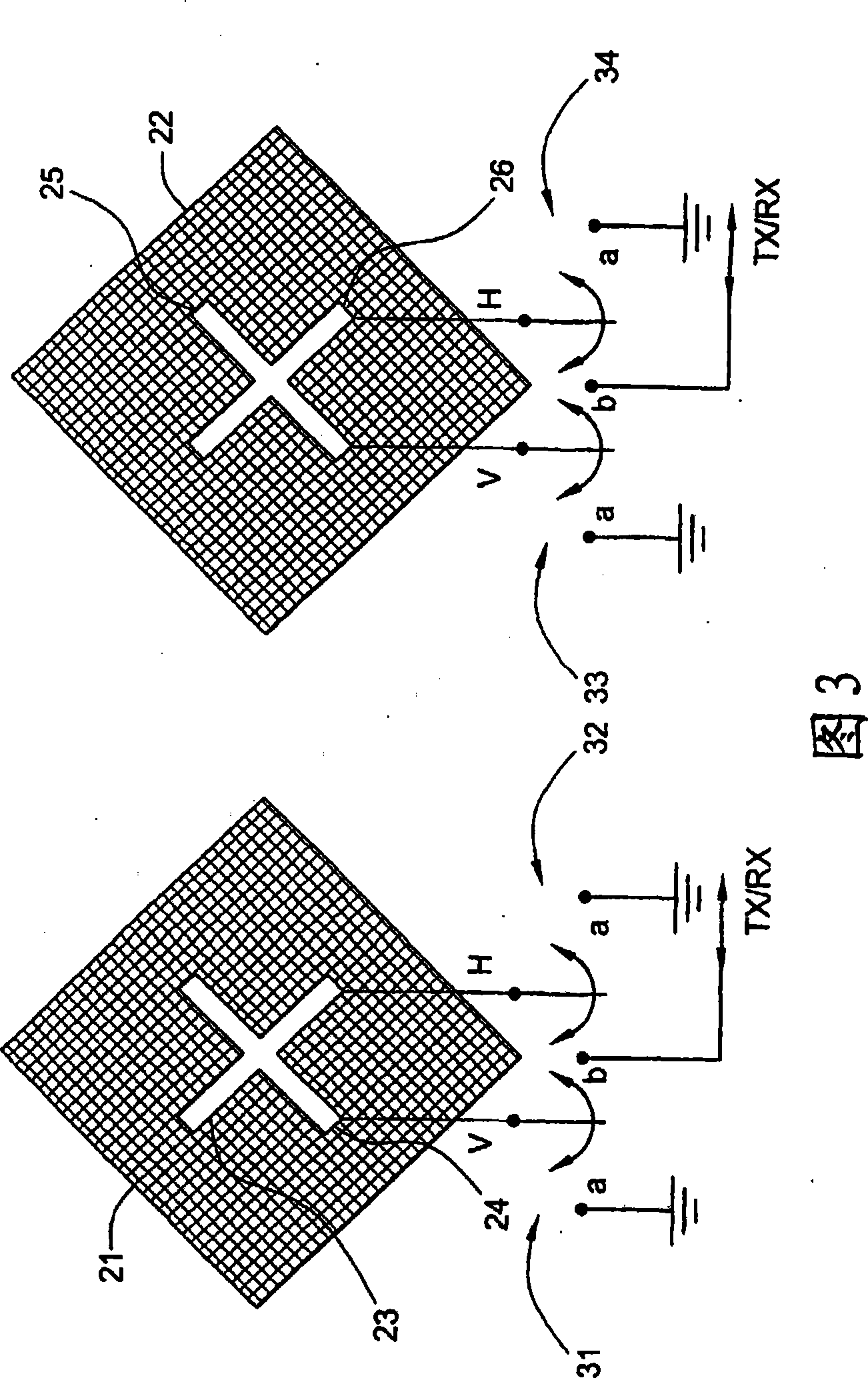Antenna arrangement for multi-input multi-output wireless local area network
A wireless antenna, antenna technology, applied in diversity/multi-antenna system, antenna, combination of antenna units with different polarization directions, etc.
- Summary
- Abstract
- Description
- Claims
- Application Information
AI Technical Summary
Problems solved by technology
Method used
Image
Examples
Embodiment Construction
[0012] The present invention is applied to products based on the wireless local area network (WLAN) standard IEEE 802.11a / g and the future WLAN standard IEEE 802.11n. According to the principles of the present invention, problems caused by Line-of-Site (LOS) communication in MIMO based on WLAN networks can be overcome. This low-cost solution then provides significant performance improvements when experiencing communications in LOS conditions. Furthermore, the present invention does not degrade performance when communications are in non-LOS states. The invention can be used to supplement a standard-compliant product without impairing the product's compatibility with the standard.
[0013] figure 1 A simplified block diagram is shown for a wireless system including, for example, a wireless local area network (WLAN). The figure shows a transmitter site in communication with a receiver site. In practice, the transmitter and receiver sites are usually transceiver sites, where e...
PUM
 Login to View More
Login to View More Abstract
Description
Claims
Application Information
 Login to View More
Login to View More - Generate Ideas
- Intellectual Property
- Life Sciences
- Materials
- Tech Scout
- Unparalleled Data Quality
- Higher Quality Content
- 60% Fewer Hallucinations
Browse by: Latest US Patents, China's latest patents, Technical Efficacy Thesaurus, Application Domain, Technology Topic, Popular Technical Reports.
© 2025 PatSnap. All rights reserved.Legal|Privacy policy|Modern Slavery Act Transparency Statement|Sitemap|About US| Contact US: help@patsnap.com



